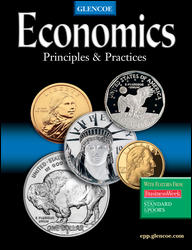
Economics Principles & PracticesChapter 10: Government SpendingChapter OverviewsChapter 10 explores the way federal, state, and local governments spend their revenues. In 2003 these expenditures were about $10,300 per capita. Section 1 discusses the growth of government spending and examines the two types of expenditures: (1) goods and services, and (2) transfer payments for which the government does not receive anything in return. This spending affects the distribution of income and competes with the private sector for scarce resources. Section 2 examines the process required of the president, the House of Representatives, and the Senate to develop and approve the federal budget. Currently, the three largest components of the federal budget—accounting for more than one-half of all federal expenditures—are Social Security, national defense, and income security. Section 3 describes the major categories of state and local spending. The largest state expenditures are intergovernmental transfers, public welfare, insurance contributions, and higher education. The largest single category of spending for local governments is elementary and secondary education. Public utilities, hospitals, police protection, interest on debt, public welfare, and highways follow. Section 4 discusses the persistent nature of the federal budget deficit and the way that deficit spending adds to the federal debt. Attempts to control the deficit have taken the form of mandated deficit targets and pay-as-you-go provisions. President Clinton's Budget Reconciliation Act of 1993 significantly reduced the federal budget deficit by introducing higher marginal tax brackets. The 1996 line-item veto also gave the president some power to trim federal expenditures, but it was ruled unconstitutional by the Supreme Court. Spending caps were introduced in the balanced budget agreement of 1997 in a further attempt to control the deficits. Finally, after 29 consecutive years of deficits, the federal budget was in surplus by 1998. |  |















